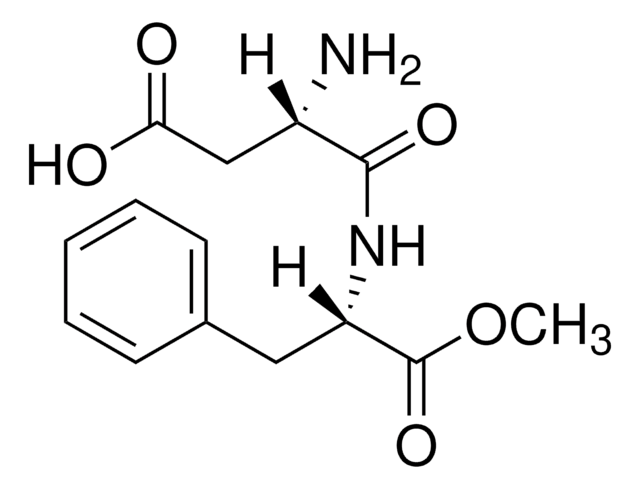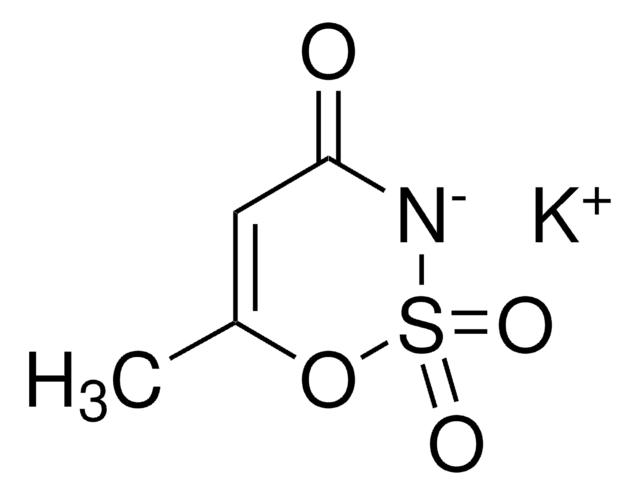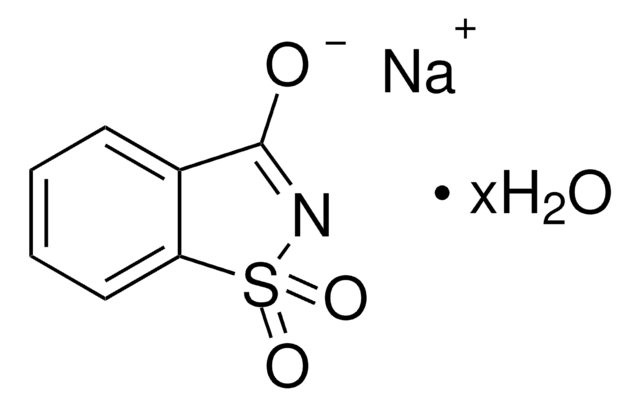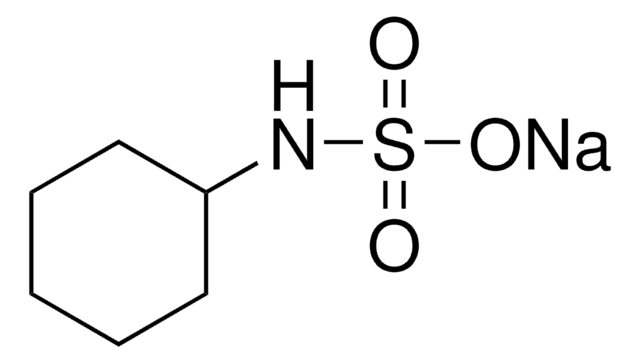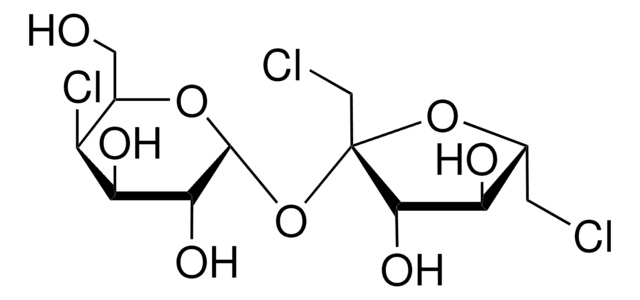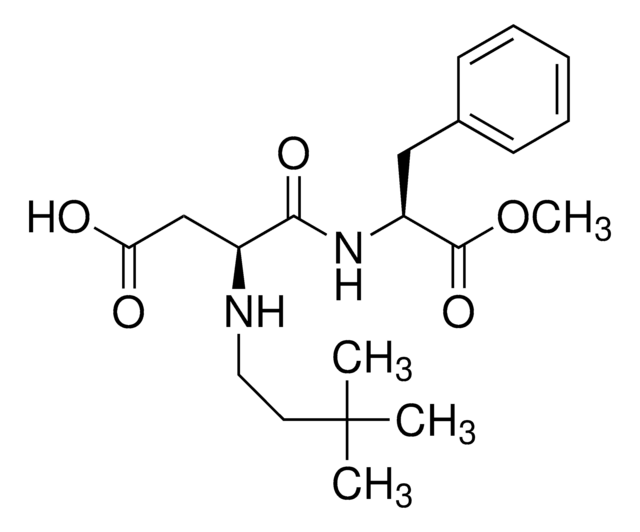04054
Acesulfame K
for food analysis, ≥99.0%
Sinónimos:
6-Methyl-1,2,3-oxathiazin-4(3H)-one 2,2-dioxide potassium salt
Iniciar sesiónpara Ver la Fijación de precios por contrato y de la organización
About This Item
Fórmula empírica (notación de Hill):
C4H4KNO4S
Número de CAS:
Peso molecular:
201.24
Beilstein/REAXYS Number:
3637857
EC Number:
MDL number:
UNSPSC Code:
12164500
PubChem Substance ID:
NACRES:
NA.21
Productos recomendados
Quality Level
assay
≥99.0% (HPLC)
≥99.0%
sweetness
200 × sucrose
application(s)
food and beverages
SMILES string
[K+].CC1=CC(=O)[N-]S(=O)(=O)O1
InChI
1S/C4H5NO4S.K/c1-3-2-4(6)5-10(7,8)9-3;/h2H,1H3,(H,5,6);/q;+1/p-1
InChI key
WBZFUFAFFUEMEI-UHFFFAOYSA-M
¿Está buscando productos similares? Visita Guía de comparación de productos
Categorías relacionadas
Biochem/physiol Actions
′New generation′, heat-stable sweetener that has not been suspected to cause cancer nor be genotoxic. Allelic variation of the Tas1r3 gene affects behavioral taste responses to this molecule, suggesting that it is a T1R3 receptor ligand.
Storage Class
11 - Combustible Solids
wgk_germany
WGK 1
ppe
Eyeshields, Gloves, type N95 (US)
Elija entre una de las versiones más recientes:
¿Ya tiene este producto?
Encuentre la documentación para los productos que ha comprado recientemente en la Biblioteca de documentos.
Los clientes también vieron
Wei-Li Li et al.
Journal of molecular neuroscience : MN, 51(1), 225-236 (2013-04-23)
The sweet taste is of immense interest to scientists and has been intensively studied during the last two decades. However, the sweet preference modification and the related mechanisms are still unclear. In this study, we try to establish a mice
Mi-Sun Ha et al.
International journal of food sciences and nutrition, 64(6), 715-723 (2013-05-02)
Using a stepwise assessment of the exposure of Korean consumers to acesulfame K and sucralose, theoretical maximum daily intakes of the sweeteners were calculated using the Budget screening method, which resulted in values greater than the acceptable daily intakes (ADIs).
In search of a role for carbonation: is this a good or bad taste?
Catia Sternini
Gastroenterology, 145(3), 500-503 (2013-07-31)
Francesco Di Salle et al.
Gastroenterology, 145(3), 537-539 (2013-05-30)
Little is known about how CO2 affects neural processing of taste. We used functional magnetic resonance imaging to investigate the effects of carbonation on brain processing of sweet stimuli, which has relevance to studies of food selection and satiety. The
Hao Jin et al.
Cell, 184(1), 257-271 (2021-01-09)
Hardwired circuits encoding innate responses have emerged as an essential feature of the mammalian brain. Sweet and bitter evoke opposing predetermined behaviors. Sweet drives appetitive responses and consumption of energy-rich food sources, whereas bitter prevents ingestion of toxic chemicals. Here
Nuestro equipo de científicos tiene experiencia en todas las áreas de investigación: Ciencias de la vida, Ciencia de los materiales, Síntesis química, Cromatografía, Analítica y muchas otras.
Póngase en contacto con el Servicio técnico